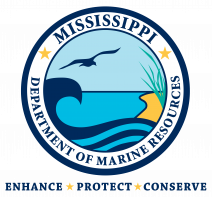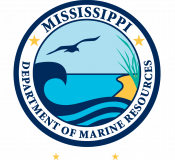GOMESA
- Russell Weatherly, Coordinator
- (228) 523-4040
- GOMESA@dmr.ms.gov
WHAT IS GOMESA?
The Gulf of Mexico Energy Security Act (GOMESA) of 2006 created a revenue-sharing model for oil- and gas-producing gulf states. Under the act, Alabama, Louisiana, Mississippi and Texas receive a portion of the revenue generated from oil and gas production offshore in the Gulf of Mexico. The act also directs a portion of revenue to the Land and Water Conservation Fund.
**IMPORTANT NOTICE: When you click the button, the application and forms will open in your web browser and will have limited functionality. For full functionality, please save the application to your computer and then edit using Adobe Acrobat. The application is a PDF form and is designed to work best with Adobe Acrobat software. You can download the free version from the https://get.adobe.com/reader/. Please make sure you have the latest Adobe Acrobat Reader update. If you experience issues with the form fields or saving progress, please make sure you are using Adobe Acrobat.
USES OF GOMESA FUNDS
- Projects and activities for the purposes of coastal protection, including conservation, coastal restoration, hurricane protection and infrastructure directly affected by coastal wetland losses
- Mitigation of damage to fish, wildlife or natural resources
- Implementation of a federally-approved marine, coastal or conservation management plan
- Mitigation of the impact of activities through funding of onshore infrastructure projects
- Planning assistance and the administrative costs of complying with this section (not more than 3 percent)
GOMESA PROJECTS
BEACH STORM WATER OUTFALLS
This project includes the removal and replacement of designated concrete storm water outfalls along US Highway 90 within Harrison County. Included will be the procurement and placement of pre-cast decorative concrete panels along side concrete walkways that will cover the outfalls. This project will reduce the total number of outfalls by combining several into one in certain areas.
MISSISSIPPI AQUARIUM
Several programs to be offered by the Mississippi Aquarium will relate to mitigation of damage to fish, aquatic life and natural resources including rescue and treatment of injured or standed marine mammals, sea turtles, raptors and shore birds with the expectation of releasing them back into the wild, if possible, or finding a suitable long term home, if needed. Programs will increase public awareness of the impact of many items such as plastics on the Mississippi Sound, Gulf of Mexico and our Mississippi beaches. The Aquarium will have a mobile unit that will travel the state to promote education focused on conservation and protection of wildlife. In addition, the Aquarium has executed MOU’s with both USM and MSU to partner in connection with items ranging from marine science research to veterinary medicine treatment and education training programs such as internships.
OCEAN ENTERPRISES AT PORT OF GULFPORT
Funding will assist Ocean Enterprise at the Port of Gulfport to solve the challenging problems of national and homeland defense, infrastructure security, environmental monitoring, and disaster response, offshore aquaculture and natural resource and habitat characterization.
OYSTER PLANT
This project will put over 60 million oysters on shell or crushed concrete into the Mississippi Sound to provide stock and future increased spat. These oysters will be placed across the Mississippi Sound to enhance future growth of oysters in different areas.
OYSTER CULTCH
Will provide additional cultch to repair diminishing oyster population. Areas to receive cultch plant include Western Mississippi Sound, Eastern Mississippi Sound and Biloxi Bay areas.
SHELLFISH WATER QUALITY TESTING
To properly classify Mississippi’s oyster growing waters and to determine the bacteriological quality of shellfish. Bacteriological water samples will be collected for all eight of Mississippi’s oyster growing area waters. During adverse pollution conditions, which are defined by the FDA as October through April, sampling of open harvest areas could be increased ensuring open areas meet their previously determined management plan criteria. This is necessary in order to ensure the sanitary control and safety of all shellfish produced for human consumption.


